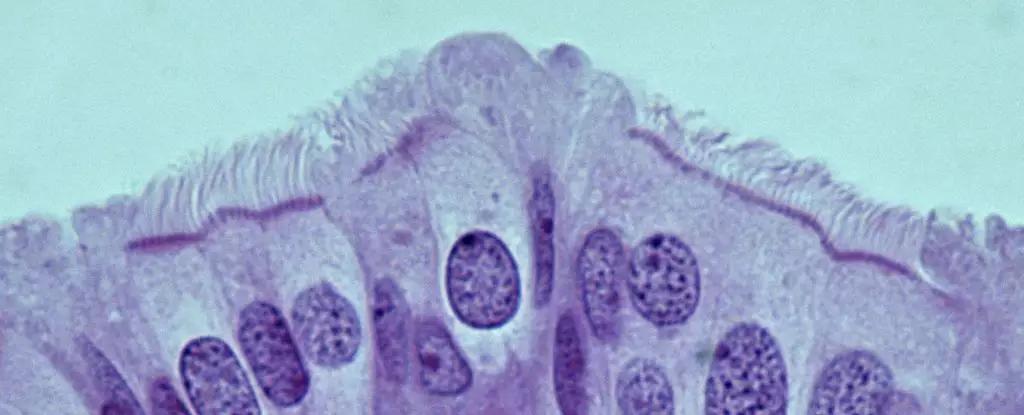In an exciting development in cancer research, scientists examining the biology of ovarian cancer in mice have identified crucial cells implicated in high-grade serous ovarian carcinoma (HGSOC), a particularly aggressive and prevalent subtype of the disease. This breakthrough stands to change the landscape of diagnosis and treatment for a cancer that is notoriously difficult to detect at early stages. If the findings in mice hold true for humans, particularly within the fallopian tubes, this could lead to revolutionary strategies for early detection, potentially saving countless lives.
High-grade serous ovarian carcinoma is a nemesis within gynecological cancers, characterized by its stealthy progression and daunting prognosis. Alarmingly, most patients diagnosed with this form of cancer succumb within a span of five years, primarily due to late-stage detection. Historically, the assumption held that ovarian cancer originated primarily in the ovaries themselves. However, emerging research over the past decade has shifted this paradigm, suggesting that a significant number of ovarian cancers may actually sprout from lesions found in the fallopian tubes. These findings pose a crucial question: if early-stage detection can be achieved through understanding these origins, what impact could that have on treatment outcomes?
The study conducted by the team led by Cornell University pathologist, Alexander Nikitin, marks an important milestone by identifying and categorizing the cellular make-up of the oviducts, or uterine tubes, in mice. Although previous studies hinted at the role of stem cells in ovarian cancer progression, this latest research highlights a different story. Researchers discovered that the cell type most susceptible to cancer development were not stem cells, but rather pre-ciliated cells. These transitional cells are in the process of developing into ciliated cells, which possess microscopic hair-like structures that assist in moving oocytes through the reproductive tubules.
This revelation shifts the understanding of how HGSOC may develop, suggesting that the mechanisms driving cancer are more nuanced than previously thought. The identification of pre-ciliated cells as a potential origin point for cancer underscores the complexities involved in identifying the very cells that may give rise to such a devastating disease.
Further delving into the intricacies of HGSOC, the research team made a noteworthy connection between certain genetic mutations frequently associated with the disease and their impact on cell behavior. Specifically, the presence of these mutations was found to hinder proper cellular functions, driving the pre-ciliated cells towards oncogenesis, or cancer formation. These findings emphasize the need for a better understanding of how these mutations interact with cellular processes in the oviducts, and potentially other areas of the reproductive system.
Additionally, parallels drawn between issues related to ciliogenesis—the formation of cilia—and other types of cancer, such as pancreatic cancer, reveal a larger pattern that could significantly enhance diagnostic capabilities across multiple cancer forms.
As research expands, scientists are hopeful that these initial findings will pave the way for identifying specific biomarkers that could serve as early warning signs of HGSOC. Additionally, unraveling the mechanisms underpinning tumor formation may lead to novel therapeutic targets, facilitating more effective treatments.
However, one crucial aspect remains: extensive research involving human subjects is necessary to translate these promising results from mouse models to clinical applications. As the scientific community pushes forward, the insights gained from understanding the cellular origins of HGSOC may illuminate new pathways to combat a disease that has long been shrouded in secrecy and despair.
In concluding, the journey from basic research in mice to potential clinical breakthroughs requires not just robust scientific inquiry but also collaboration across disciplines to ensure that insights translate into real-world impact. As we stand on the cusp of a potentially transformative era for ovarian cancer detection and treatment, vigilance and curiosity in research will be vital in the battle against this formidable foe.


Leave a Reply